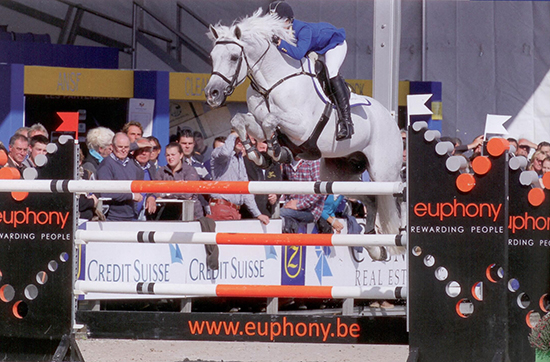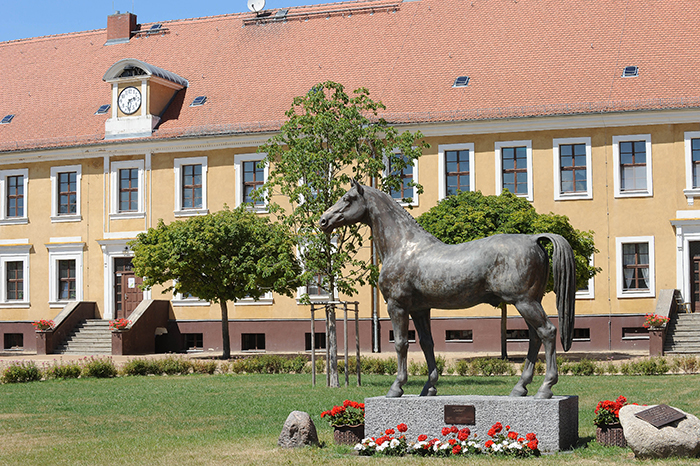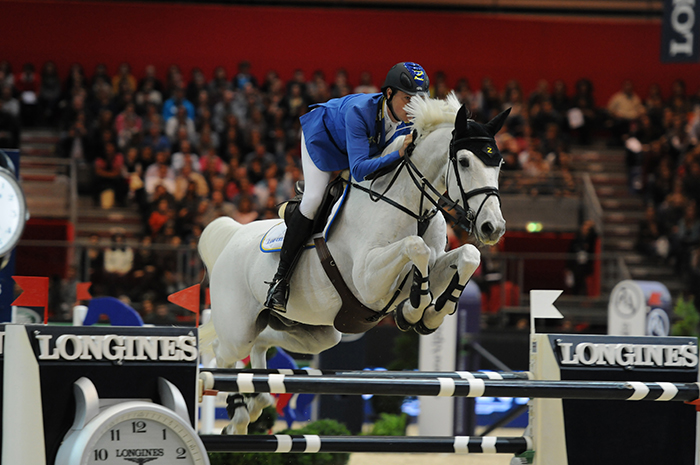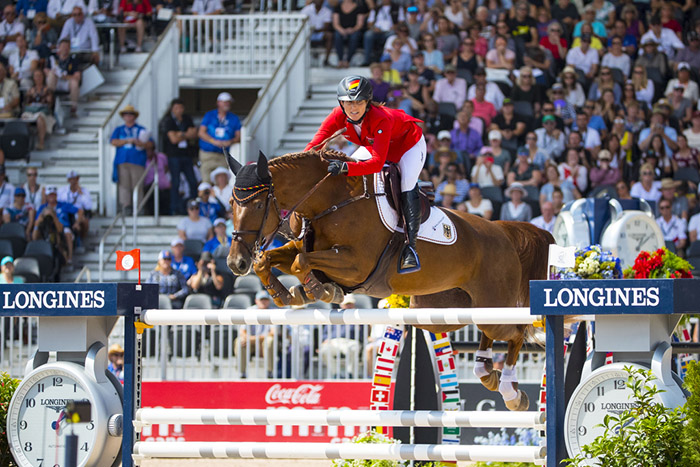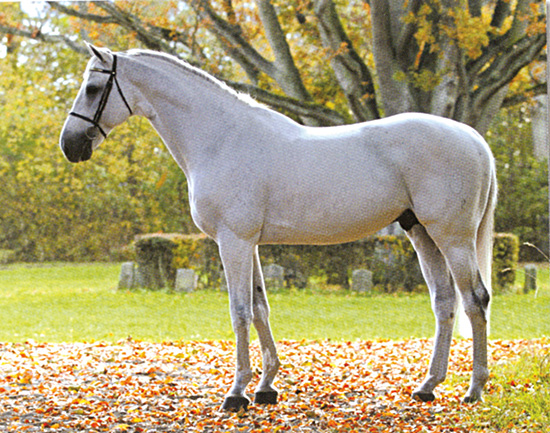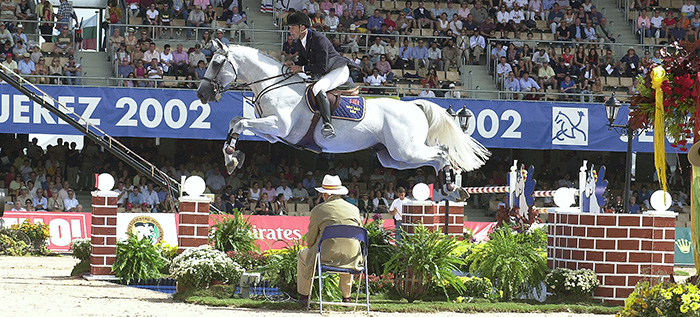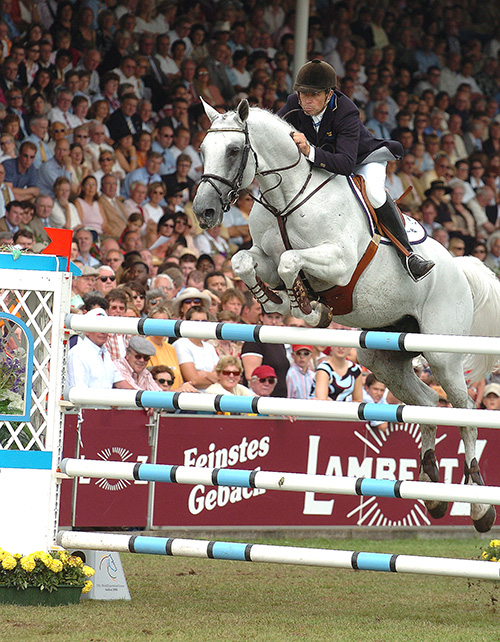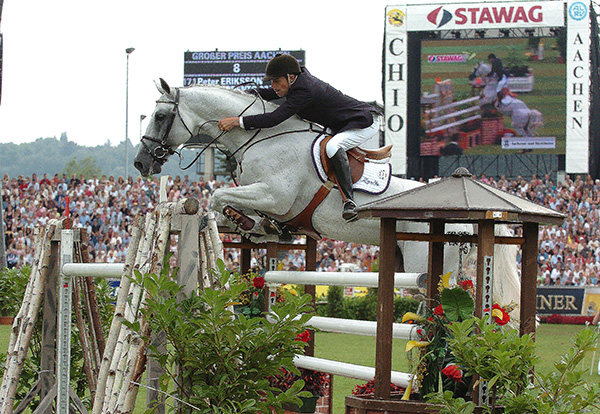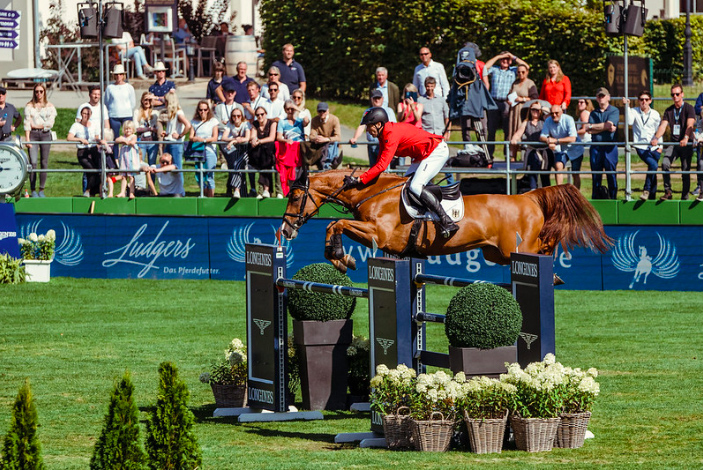
The new European Champions – Andre Thieme and DSP Chakaria
(Photo – FEI/Christophe Taniere)
As with the WEG in Tryon, the European Showjumping Championships were a triumph for one of the newer studbooks, the Deutsches Sportpferd (DSP). At the WEG, the World Champion was DSP Alice (Askari / Landrebell), while the new European Champion from Riesenbeck is DSP Chakaria (Chap I / out of an Askari / Levisto mare).
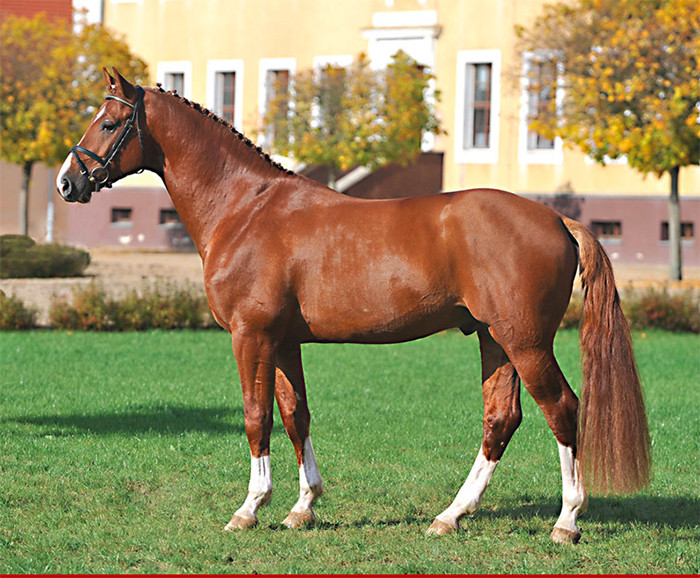
Chap I
Chap (Celestial / Contender) is not a household name, but he has had a more than respectable career. He was the premium stallion of the Mecklenburg licensing in 2006 before going on to star in his performance test, with the highest jumping score. In 2010, Chap was a series winner in young horse classes L and M. By 2014, Chap had placed 27 times up to class S **** and was awarded the title VTV Stallion of the Year at the 2014 Oldenburg Stallion Days in Vechta. He went on to win more than €100,000 in jumping competition. Chap I stood from 2007 to 2010 at the Brandenburg stud Neustadt / Dosse where he produced numerous award-winning foals for the breeding areas of Brandenburg, Saxony-Anhalt, Mecklenburg and Oldenburg, often with daughters of the Holsteiner, Levisto, who was used very early in his career at Neustadt / Dosse. Levisto had been spotted in the performance test by the canny stud director at the time, Dr Jürgen Müller, before Levisto went to Zangersheide.
Levisto Z competing for Zangerseide
Chap is by Celestial (Cantus / Windesi xx). Mario Everse, who was the winner of the WBFSH breeders’ award in 2017, is a fan of the grey Oldenburger, Celestial: “I also used Celestial, he’s a bit of an older stallion, but I like good conformation in my horses. He is a bit uphill and a ‘bloody’ horse, he’s an older stallion, but actually quite modern, that’s why I use Celestial.”
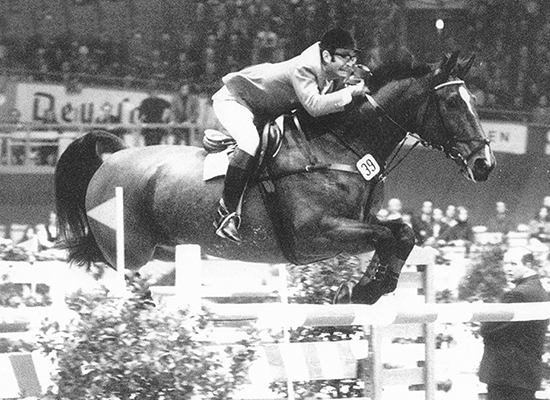
The first great fusion – Ahorn Z
The new European champion, Chakaria is out of Askaria 3, a 1.60m competitor with Pius Schwizer. Askari 3 is by Askari, who is by Accord II by the first great ‘fusion’ of modern showjumping breeding, Ahorn Z, who was by Almé out of the Holsteiner mare, Heureka. Askaria 3 is out of Levisto Model, by Levisto and out of a mare by that stalwart of the Brandenberger book, Kolibri. On his dam line, Accord II is out of Ribecka by Calypso I by Cor de la Bryère out of Tabelle.
Kolibri, the stalwart of the Brandenberger book
The DSP began in 2003 as a co-operation between the East German horse breeding associations in Berlin-Brandenburg, Saxony-Anhalt, Saxony and Thuringia so creating a base of around 6,500 mares.
At first the new grouping produced a series of very successful dressage horses, starting with the 2006 Bundeschampion, the recently deceased, Quaterback (Quaterman / Brandenburger) who became an established sire of Grand Prix competitors. Others who were successful included a six-year-old World Champion young dressage horse, Poetin I (Sandro Hit / Brentano II) and the full-brothers, Samba Hit I and II.
Aragon Z and Christian Ahlmann
Soon the dressage stars were joined by show jumpers like Aragon Z by Askari under Christian Ahlmann and Kira Bel by Kolibri x Darß xx with Rene Tebbel .
Since 2014, the DSP stud book has been expanded to include the South German Horse Breeding Associations. This union of the seven associations, has created a base of 9,000 registered mares and about 500 stallions making the German Sport Horse one of the largest riding horse populations in Germany.
DSP Alice and Simone Blum
German sport horses now on the front line include DSP Alice and Simone Blum, the current world champions in show jumping. Other top horses like, DSP Cashmoaker, DSP Anpowikapi, DSP Cuba Libre, DSP Cedric, Chilly Jam DSP, DSP Fierro, DSP Boss Hoss or the world championship title holders of young horses like Asha P, Fortino, Secret, DSP Belantis and DSP Don de la Mar. German dressage star, Dorothy Schneider is obviously a fan, she competes three – DSP Sammy Davis JR, DSP Quantaz and DSP Pathètique.
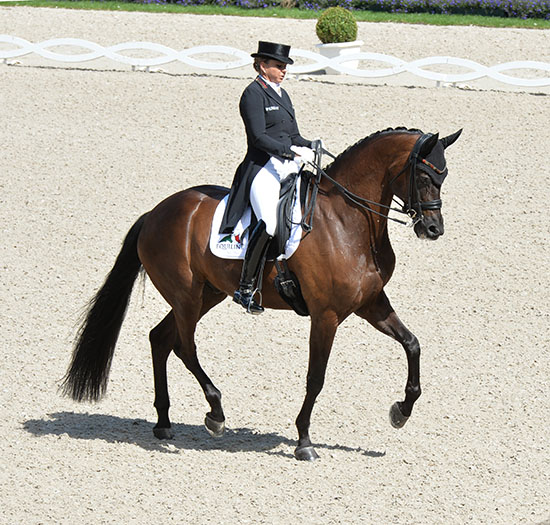
DSP Sammy Davis Jr and Dorothee Schneider
The Europeans at Riesenbeck were also a triumph for Cardento, a stallion who died a few years ago, but who continues to favour us with foals thanks to the magic of frozen semen. Cardento (Capitol / Lord / Sacramento Song xx) was the sire of two competitors at Tokyo, Dubai (Kastello) and the ill-fated Kilkenny (Guidam).
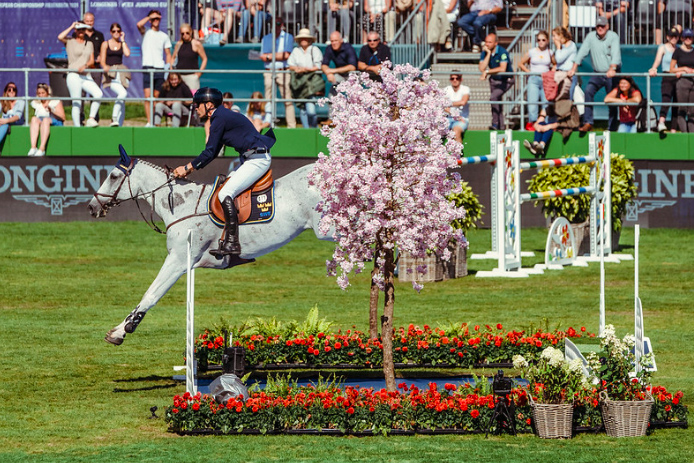
Catch Me Not
At Riesenbeck, Cardento was the sire of three horses that finished in the top ten individual placings: Catch Me Not (Ramiro’s Son) who finished 3rd with Peder Fredricson, the fifth placed, Katanga v/h Dingeshof (Tornado FCS) with Nicola Philippaerts and in seventh, David Will and C Vier (Concorde).
It is tribute to Cardento’s influence across borders that the horses are from three studbooks, Swedish, BWP and Holstein. None branded KWPN despite the fact that Cardento stood for most of his life at the VDL stud in Holland’s north.In truth, Cardento had a somewhat troubled relationship with the KWPN. Cardento was another of the splendid horses that Wiepke van der Lageweg discovered in Holstein, but when he brought the young stallion to the KWPN licensing commission, they were not impressed.
Arie Harmoin was a member of the commission that rejected Cardento: “I was in the licensing commission in 1969. Cardento came for the second round, he was big, not much expression, and when he was free jumping, we thought he was not clever enough, and so he goes out. He is not to go to the performance test…”
“Cardento when he was a young horse, when he was three years old, he was a big Holstein stallion, slow motion, but when he was trained and older, he was a very good performer at the highest level, and he had the chance in Sweden, because he got a lot of mares, and he did a pretty good job.”
In Sweden, teamed with Peter Eriksson, Cardento won silver medals in the Swedish team at the European Championships in Arnhem in 2001, the World Equestrian Games in Jerez in 2002 and the Olympic Games in Athens in 2004. The pair won many Grand Prix including Holte, Helsingborg and Gera. In his last season of competition, 2006, Cardento was third in the five-star Grand Prix of Falsterbo.
Cardento sired numerous jumping stars in Sweden before returned to the VDL stud, where he became one of the world’s leading jumping sires. He is 8th on the current, 2020, WBFSH rankings.
(Don’t miss the Cardento Picture Gallery at the end of this article.)
There are two other stallions with three representatives. Quidam de Revel who seven years after his demise continues to provide frontline competitors, up all he has produced 165 foals that have gone on to jump 1.60m!
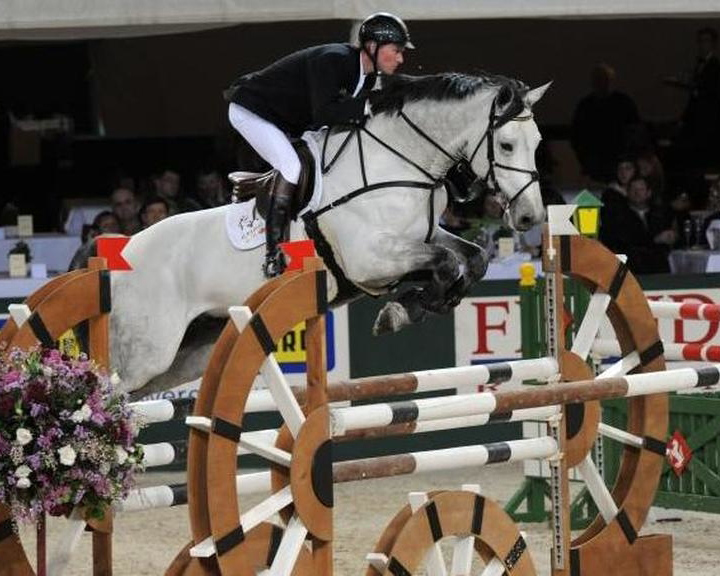 Chippendale Z
Chippendale Z
The other with three is the far less well-known, Chippendale Z. The grey stallion was born in 2000 and had a rather modest career with Argentinian, Martin Mello, competing to 1.60 level, but his two placings were at 1.40m. Chippendale is by Cento out of a Cassini I mare, again emphasising the contribution of Capitol, who not only sired Cardento, but is the sire of both Cento and Cassini I.
In terms of the stud books, the BWP continues to dominate with ten representatives, joined by four from the other Belgian book, the sBs. Next best there is a tie between the KWPN and Zangersheide with six each. Two of the powerhouses of yesteryear, Selle Français and Holsteiner, have four each.
Cardento Gallery follows below

Cardento, initially rejected by the KWPN Licensing Commission – here as a mature stallion
Cardento in the Swedish Team at Jerez in 2002

